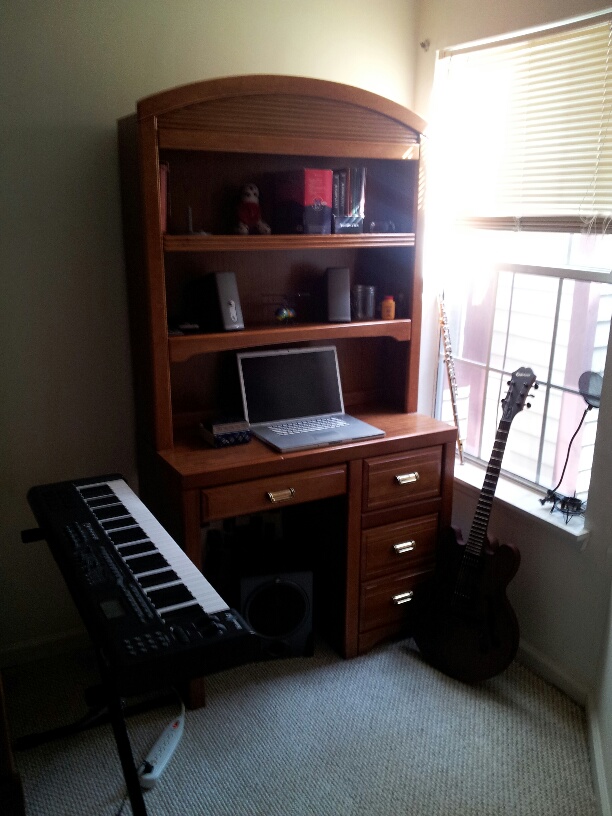In my last two blogs I outlined my strategy and motivation behind producing a single called “Poopy Diaper”, which will be released on YouTube in early January. In a nutshell, my overall goal has been to create a song that permeates culture and therefore generates meaningful performance royalties for my family. At a time when “What Does the Fox Say?” is the most talked-about song around the water cooler, I have no compunction about creating an anthem that parents use to taunt their potty-training 2-year olds.
Today I’ll outline how the actual song was written and demoed.
I’m a lyrics-first kind-of-guy. That’s not because I’m one of those people who hear lyrics first when listening to a song. In fact, quite the opposite. It is because writing lyrics is a weakness of mine and so, as my 11-year old does with his homework, I start with the hardest part.
I’ll talk more about the process of writing lyrics in a later blog, but for this article I’ll just say that the philosophical challenge was determining the perspective of the performer. What about the poopy diaper? I am, of course, walking a fine line in terms of what a listener can handle. I have been in bands with people who delight in describing their bowel movements. They think it’s hilarious. I can’t handle it. So for this song I took the high road and imagined a child who felt proud of something they had produced. And to extend the metaphor even further, I imagined a child who was “bursting” at the chance to express something – an emotion or an attitude- they had been bottling up inside. Once I had this viewpoint figured out, the ground was fully…eh…fertilized for double-entendres. It become a blast to write these words.
Click here to download the original lyrics to “Poopy Diaper” as a PDF
Once the lyrics were written, my next step was to demo the song for my team members so they could have a reference for my vision. It’s embarrassing to admit this to a community of recording studio professionals, but it had been years since I had sat down at a digital audio workstation with the goal of producing a track. I won’t bore you with my resume as a Cubase (yes, Cubase) power user back in the day. But there I was sitting in for the first time in front of this rig:

Axiom 61 MIDI controller, Apple Logic 8 running on a Mac Powerbook with Komplete 7 sample library installed, Digidesign MBox2
But there was nothing to worry about. It was stunning how intuitive Logic was to my needs. 95% of the keyboard parts I laid down in that demo session are still on the final track. It literally felt like the software read my mind and always stayed two steps of ahead of me. “I wish I had something here that sounds like… (scrolling through presets)…yep..that’s it.”
Not once did I have to fuss with getting delay effect tempos to match, cross-fading wave forms into each other, restructuring file paths, fishing for a better reverb or any of those headaches that used to keep me up nights. It was kind of insane. I now understand why my church musician buddies say “Logic is where you write. Pro Tools is where you mix.”
In my next installment of this series, I’ll talk about the team of amazing musicians I recruited for this project and what special skills and talents they brought to the production. Stay tuned.
_____________________________________________________________________________________
Mike Bielenberg is a professional musician and co-founder of http://www.musicrevolution.com, a production music marketplace with over 25,000 tracks online where media producers, video producers, filmmakers, game developers, businesses and other music buyers can license high-quality, affordable royalty-free music from an online community of musicians mbielenberg@musicrevolution.com. ![]()